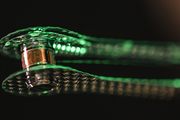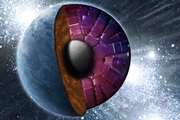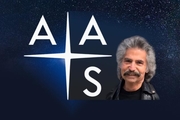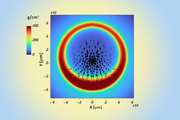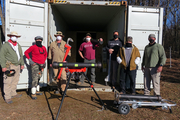Nature paper chronicles how researchers achieved burning plasma regime for the first time in a laboratory experiment
Jan. 26, 2022-
After decades of fusion research, a burning plasma state was achieved on November 2020 and February 2021 at Lawrence Livermore National Laboratory’s National Ignition Facility (NIF), the world’s most energetic laser.
Obtaining a burning plasma is a critical step toward self-sustaining fusion energy. A burning plasma is one in which the fusion reactions themselves are the primary source of...
Ironing out the interiors of exoplanets
Jan. 13, 2022-
The discovery of more than 4,500 extra-solar planets has created a need for modelling their interior structure and dynamics. As it turns out, iron plays a key role.
Lawrence Livermore National Laboratory (LLNL) scientists and collaborators have used lasers at the National Ignition Facility to experimentally determine the high-pressure melting curve and structural properties of pure iron up...
LLNL scientist honored as 2022 American Astronomical Society fellow
Jan. 7, 2022-
LLNL physicist Richard Klein has been selected as a 2022 fellow of the American Astronomical Society.
Klein, who was selected “for broad and influential contributions to computational astrophysics, for scientific achievements on radiatively-driven stellar winds and star formation theory and for training a generation of students and postdoctoral scholars,” is one of 23 members honored as...
Study reveals cause of 3D asymmetry in ICF implosions
Feb. 25, 2021-
Inertial confinement fusion (ICF) implosions require very high levels of symmetry in order to reach the high densities and temperatures required for fusion induced self-heating. Even percent-level deviations from perfect spherical symmetry can lead to significant distortions of the implosion and ultimately degrade fusion performance.
To that end, researchers from Lawrence Livermore...
LLNL Weapon Engineers, Biologists Deliver Critical Samples to Identify Skin Proteins Left on IEDs
Feb. 17, 2021-
Following a terrorist bombing, can the bomb maker be identified by skin proteins left on the bomb components they handled?
To address this question, Lawrence Livermore National Laboratory (LLNL) personnel from Weapons Complex Integration (WCI) and Global Security (GS) Forensic Science and Biosecurity Centers (FSC/BSC) subjected notional bomb components handled by LLNL volunteers to...

